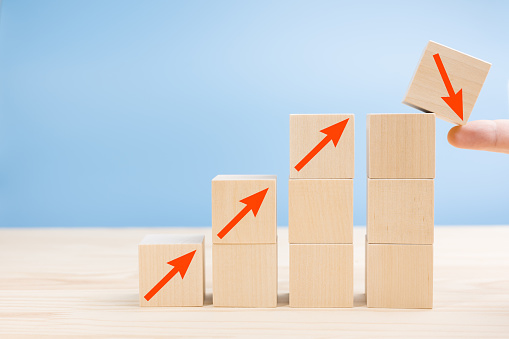What Type of Economy Does the United States Have?
The United States has a mixed economy, which means that private businesses pursue their goals while the government provides services. In this type of system, the government may intervene in areas such as taxes and trade. Historically, the U.S. government has played a role in the economy, and that role continues today. For example, during the recent influenza pandemic, U.S. lawmakers approved a bill for $3 trillion in spending, including a one-time payment of $1,200 for most adults.
Market economy
The United States is a market economy, which means the government has little or no influence over how goods are produced and prices are set. This contrasts with North Korea, which has a command economy, where the central government controls nearly every aspect of business. In a market economy, goods are traded between businesses and consumers according to supply and demand. This system promotes competition and the free exchange of goods and services, and it protects consumers.
In a market economy, consumers have a voice in the decision-making process. They can influence the direction of the economy through their purchases and their votes for government officials. Consumers have also voiced concerns over product safety and environmental issues, and the government has responded to these concerns by creating agencies that promote the public good.
In a market economy, competition limits abuse of economic power. Ultimately, each firm tries to advance its self-interest. In a market with enough competition, the best performers can capture a majority of the market. For example, Walmart has used transportation and information technology to drive out smaller firms.
The United States has a mixed economy, which combines aspects of capitalism and socialism. While allowing private companies to operate without government interference, a market economy allows businesses to innovate and lower costs, which benefits consumers. This results in higher efficiency in the economy. Further, a market economy fosters innovation and creates a competitive environment. While the government is often involved in economic activity, it generally remains small and moderate.
In the United States, the economy is experiencing increasing concentration in the largest firms. This trend is often reflected in the increase in profits of these firms. Normally, new firms would compete with these large firms for profits, but in recent years, large companies have increased their profits. This is a result of the growing concentration of business power in the United States. Furthermore, fewer startups are launching in the United States.
Mixed economy
Mixed economies allow for both free market competition and government regulation to promote a stable economy. While profits are highly prized in mixed economies, government involvement in these sectors fosters efficiency and innovation. In addition, these types of economies allow for government to focus on areas of the economy that a market economy might overlook. For example, a mixed economy allows for more funding for public goods such as public education and defense.
In the United States, the government and privately owned businesses play an important role in the economy. The government’s involvement in the economy helps limit concentrations of power, and it also addresses social problems. Because of this, economists consider the mixed economy in the United States to be a positive one. Nonetheless, many Americans have different opinions on how to best balance the roles of the government and free enterprise.
The mixed economy is relatively new. Traditionally, most nations were either highly market-based or highly socialist. After the Great Depression, however, the government began to play a larger role in the economy, increasing its spending and influencing market activities. This new type of system is a way to strike a balance between the two.
Mixed economies also allow for sensible regulation. In the US, for instance, the Federal Trade Commission’s Bureau of Competition regulates anti-competitive practices in order to promote fair competition and reduce monopoly control. In addition, the US has antitrust laws that make certain forms of price discrimination illegal. This protects consumers from underhanded practices.
A mixed economy contains the characteristics of a free market economy and a planned economy. The government regulates markets and participates in private businesses, but it also monitors them and sometimes interferes with their allocation. As long as the government protects private property, mixed economies are generally more stable. Governments also provide services such as roads, schools, libraries, and legal aid to help individuals and businesses.
Anti-socialist sentiment in the United States reached a fever pitch in the 1950s with the communist takeover of China, followed by the Soviet takeover of Eastern Europe. Senator Joseph McCarthy launched a crusade against communism and called for the surveillance of all American citizens, arguing that such measures were essential for national security. In particular, he targeted Chinese Americans, using a program that technically was designed to track illegal immigrants but was interpreted as a broader program to monitor potential Chinese Communist Party spies.
While socialist sentiment was on the rise in the United States, the organized socialist movement is still in its infancy. The SPA was an organization that sought to promote socialist principles based on growing industrial factories, limited government, and an ever-expanding labor movement. It was a radical political movement, and it aimed to reshape the United States into a socialist state.
Socialism is a form of government rule where the government takes charge of managing the resources of society. The government would own land, businesses, and property, and allocate the profits to the people. While socialism has many strands, the common goal is the reduction of inequality and the centralization of government. It also requires a strong democratic system in order to be successful. For this reason, there are many variations between socialist systems, including their production processes and distribution of resources.
Socialism in the United States has its drawbacks. In the short run, it has led to inequality. Increasing inequality has led to rising poverty and a growing social gap. However, socialism doesn’t guarantee an equitable democratic process. Private enterprise and preexisting privileges will still influence the political process.
Welfare state
The welfare state economy in the United States has a long and storied history. Founded in the 19th century, it has served as a bulwark against economic hardship. In the 21st century, the welfare state has undergone many changes as the global economy has evolved and a new role for women and children has been created.
Its architecture is different from the private sector, and is larger than many people believe. It is an economy of mixed types that reflects American federalism. The American welfare state is divided into two main divisions and a number of subdivisions, each with a different historical origin and trajectory over time.
Ultimately, the welfare state is about sharing risk. The welfare state helps people insure themselves against social risks and redistributes income throughout their lifetimes. But the two approaches to risk sharing are not equivalent. One is liberal and the other is conservative. Liberal welfare states respond to market and labor force imperatives by providing many benefits linked to employment. While liberal welfare states seek to maximize the benefits of employment, conservative welfare states rely more on state provision of services and express the normative ideals of the nuclear family.
The effect of the welfare state on inequality depends on the way it is financed. Conservative welfare states, which are typically characterized by universalist tax-financed systems, are redistributive but not progressive, as they are generous to the middle class and do not target the poor. Despite this, higher income groups enjoy the benefits of social services at a much higher rate than their poorer counterparts.
Public welfare states are another form of welfare state. This includes public services and means-tested programs. The term “welfare state” was popularized by William Temple, the Archbishop of York. He used it in 1941 to contrast the welfare state with the Nazi “warfare state”.
Free enterprise
Free enterprise is a way to ensure that people have a choice in the goods and services they buy. It encourages people to create new businesses, which promotes economic growth. This also means that consumers benefit because more businesses mean more competition, which creates innovation. It also means that people aren’t tied to one employer and can choose to work for different companies if they so choose.
This system allows people to invest their money, improve their quality of life, and create wealth. It also allows businesses and individuals to determine their own prices. In a free enterprise system, prices are determined by the supply and demand of goods and services. This allows business owners to maximize their profits without the need for government intervention.
Free enterprise also requires a legal framework that recognizes private property ownership and protects the rights of property owners. The Constitution and Declaration of Independence recognize this fundamental principle. America’s Founders were concerned about arbitrary seizure of private property, and so they included protections for private property in the Constitution and Declaration of Independence.
In a free enterprise system, competition among sellers keeps prices low and provides a market for goods and services. It also ensures that prices are fair and reasonable, because if prices are too high, citizens will seek other options. Free enterprise also promotes competition among producers, which means that prices fluctuate according to supply and demand. If there is enough supply, prices will be low, while high demand will increase prices.
Free enterprise allows people to spend their money the way they want. Moreover, it allows companies to compete for your business, which reduces prices and provides higher quality products and services. Additionally, it allows people to pursue any type of job they want. Socialism, on the other hand, restricts individuals’ ability to own their own businesses.



